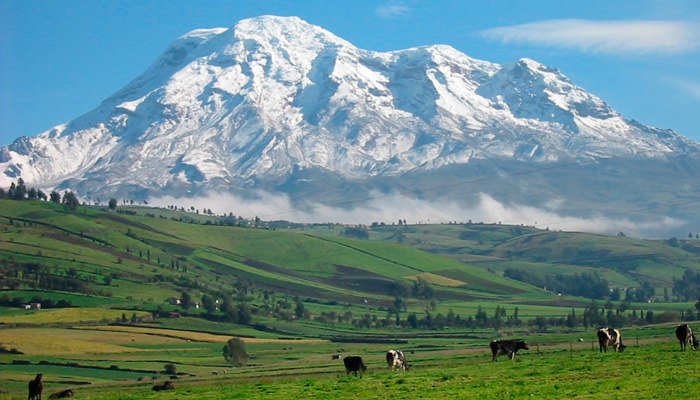
From the map on the right you will see that the whole of the High Andes of Ecuador is an avenue of Volcanoes. And this is what has built these mountains. You are surrounded by Volcanoes, they are everywhere. Some are active and smoking, some are inactive, some just seem dormant but there is a lot of activity going on under the surface.
And with Volcanoes also comes Earthquakes. Smaller ones are a constant inconvenience. In the last 100 years there have been thirteen major quakes (between 5.1 and 7.8)
In the last 20 years there have been three over 7 on the richter scale. 2010 Riobamba (7.1) sierra near Chimboraza, 2016 Manabi (7.8) on the coast, 2019 Pastaza (7.5) on the edge of sierra/Amazonia. I certainly remember getting the phone call from our family to say they were all OK, but that one had been really frightening.
So, a quick quiz question: Which is the tallest Mountain in the World? Well, the answer depends on how you calculate it. If you measure from the centre of the Earth then Mount Everest in Nepal is 6,382.3km and The Volcano Chimborazo in Ecuador is 6384.4km.









I have discovered that in Ecuador, volcanoes have gender. The indigenous refer to a volcano as being either “taita” (tayta) or a “mama”. According to one cultural expert, the mama volcanoes produce ash that helps to fertilize the soil. But the land around taita volcanoes is generally not suitable for agriculture. Since pre-Inca times, people have understood which areas are the most fertile.
- Mama Tungurahua has had numerous eruptions in recent years which have resulted in financial loss. But farmers still work the land because it is fertile and suitable for cultivation.
- Taita Cotopaxi has left little that’s suitable for cultivation.
- Guagua Pichincha, a daddy, has not benefitted nature.
- Reventador, a mama, has allowed nearby plantations to thrive.
- Mama Cayambe left fertile soil after its last eruption in 1785-1786.
- Taita Imbabura left worn-out soil after it erupted 14,000 years ago.
- Mama Cotacachi is surrounded by fertile soil and farmers still cultivate its slopes.
Over looking Quito you have two Volcanos that are related: Ruca Pichincha (is the daddy) and Guagua Pichincha (is the baby or boy).
